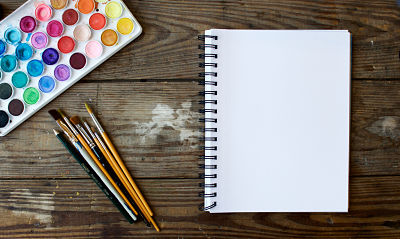
“You can never solve a problem on the level on which it was created.” – Albert Einstein
Have you every found yourself working on a difficult problem, but at a complete loss for how to solve it? You’ve tried everything you can think of, but keep running into dead ends. Your brainstorms are more like a light drizzle. What can you do when you run into the problem-solver’s equivalent of writer’s block?
Conventional wisdom would tell you that you need to “think outside the box”. This is easier said than done. While there are numerous tips available for helping you to jump start your creativity, it is still something that most of of struggle with.
There are some people, however, who seem to be able to generate new ideas faster than they can spit them out. What makes these people so good at developing innovative ideas? How are they able to consistently produce ideas that no one else has thought of before? And how can we learn to do that too?
In his book, Smarter Faster Better: The Secrets of Being Productive in Life and Business, Charles Duhigg describes what sets many of the best innovators apart. They don’t create new things from scratch. Instead they connect dots between ideas to combine old concepts in new ways. He calls these individuals “innovation brokers”.
“Fostering creativity by juxtaposing old ideas in original ways isn’t new. Historians have noted that most of Thomas Edison’s inventions were the result of important ideas from one area of science into another…. A 1997 study of consumer product design firm IDEO found that most of the company’s biggest successes originated as ‘combinations of existing knowledge from disparate industries.’ IDEO’s designers created a top-selling water bottle, for example, by mixing a standard water carafe with the leak proof nozzle of a shampoo container.”
Here are three tips that Charles Duhigg shares about how to become an innovation broker along with my thoughts on putting them into practice.
- “Be sensitive to your own experiences.” Pay close attention to your own thoughts and feelings. This will help you identify lessons from your own experiences that you can use to improve your creativity.
“No two persons can learn something and experience it in the same way.” – Shannon L. Alder
Obviously, the more variety you have in your experiences, the more creative material you will have. Seek out as many different experiences as you can. Try new things. Feed your curiosity. Take risks. Change up your routine and pay attention along the way.
You can also learn from the experiences of others, not just your own personal experience. Ask your friend what they learned on the interesting trip they just took. Seek out people with experiences or backgrounds different from your own. Read a large variety of materials. Anything that will broaden your horizens can give you new ideas to apply to your life.
- “Recognize that the stress that emerges amid the creative process isn’t a sign everything is falling apart.” It is not always a sign of imminent failure. Sometimes the stress is necessary to get us to see our problems in new ways. It forces us to think differently.
“Anxiety is the handmaiden of creativity” – T.S. Eliot
We should embrace the stress that comes as part of the creative process, knowing that it can be a powerful motivator. Use it to your advantage by making it a reminder to think about things differently. Don’t keep beating your head against the wall. Try a new approach. Engage someone with fresh ideas. Revisit ideas that seemed too crazy at first.
At times, it may even be beneficial to purposely foster creative tension within your team. If their ideas are feeling stale or uninspired, impose some new restrictions on the problem. Set an impossible target. Introduce disagreements into the conversation. Anything to increase the stress levels just enough to motivate them to think differently.
- “Finally, remember that the relief accompanying a creative breakthrough, while sweet, can also blind us to alternatives.” If we are not careful, the first decent idea we have can crowd out any others simply because we stop looking for others. We need to critique our work to spot its flaws, and look for opportunities to improve even further.
“We are never more creative than when we are at odds with the world and there is nothing so artistically destructive as comfort. Princess Leia taught me that.” – Simon Pegg
It is all too easy to fall in love with one specific idea early in the creative process, especially when that idea eases our stress. Don’t lock yourself into one idea too early. Keep brainstorming, even after you have a few acceptable ideas. Maintain your options as long as you can by delaying decisions that will eliminate options. Pursue parallel paths whenever possible.
If you ever find yourself getting locked into an idea too early, slow down and critique it. Ask yourself what is wrong with the idea. What have you missed? What could be better? What assumptions may not be accurate? If it stands up to the scrutiny, you can be more confident moving forward that you have made the right decision.
Following these tips will allow you to become an innovation broker, or to develop them on your team. The creative thoughts that follow will lead to better results as you develop innovative ideas by applying old concepts to new situations.
What tips or tricks do you have for improving your creativity?
